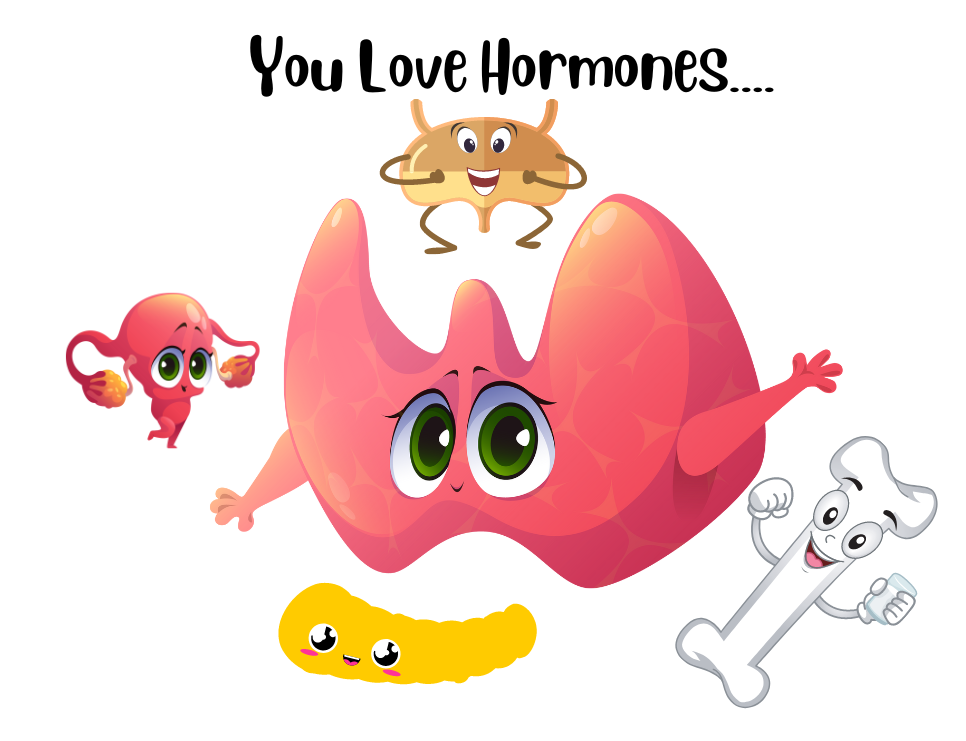Cushing’s Syndrome Guideline Quiz
Cushing’s Syndrome Guideline Quiz
Quiz Summary
0 of 40 Questions completed
Questions:
Information
You have already completed this quiz. You cannot start it again.
Quiz is loading…
You must sign in or sign up to take this quiz.
You must first complete the following:
Results
Quiz complete. Results are being recorded.
Results
0 of 40 Questions answered correctly
Your Time:
Time has elapsed.
You have reached 0 of 0 point(s), (0)
Earned Point(s): 0 of 0, (0)
0 Essay(s) Pending (Possible Point(s): 0)
Categories
- Board Review Endocrinology 0%
- 1
- 2
- 3
- 4
- 5
- 6
- 7
- 8
- 9
- 10
- 11
- 12
- 13
- 14
- 15
- 16
- 17
- 18
- 19
- 20
- 21
- 22
- 23
- 24
- 25
- 26
- 27
- 28
- 29
- 30
- 31
- 32
- 33
- 34
- 35
- 36
- 37
- 38
- 39
- 40
- Current
- Review
- Answered
- Correct
- Incorrect
- 1. Question
Which of the following medications can rapidly lower cortisol levels in patients with severe hypercortisolism?
CorrectIncorrect - 2. Question
Which of the following is a life-threatening complication of CS that requires urgent treatment?
CorrectIncorrect - 3. Question
A 35-year-old female is diagnosed with ectopic ACTH syndrome associated with serious comorbidities including pulmonary thromboembolism and cardiovascular problems. What is the recommended management for severe hypercortisolism in this patient?
CorrectIncorrect - 4. Question
Which medications target SST2 and Dopamine 2 receptors, and may reduce ACTH secretion to control hypercortisolism in ectopic ACTH-secreting tumors?
CorrectIncorrect - 5. Question
Which medication is the only medical treatment available for severe hypercortisolism in seriously ill patients who cannot take oral medications, and is useful in an emergency setting with acute unmanageable symptoms such as respiratory failure or severe psychosis?
CorrectIncorrect - 6. Question
What is the primary use of Mitotane in Cushings syndrome?
CorrectIncorrect - 7. Question
Which of the following medications is a dopamine agonist with high affinity for dopamine receptor subtype 2, and is effective in treating corticotroph adenomas?
CorrectIncorrect - 8. Question
A 55-year-old female with Cushing’s disease is not a surgical candidate due to severe comorbidities. Which of the following medications can be used to treat her hypercortisolism?
CorrectIncorrect - 9. Question
A 42-year-old male presents with Cushing’s disease, and his UFC levels have not normalized after transsphenoidal surgery. Which of the following medications can be used to treat his hypercortisolism?
CorrectIncorrect - 10. Question
A 34-year-old female presents with Cushing’s syndrome due to an adrenal adenoma. She is noted to be hypertensive and febrile. She is admitted to the ICU and is not deemed a surgical candidate at this time due to her multiple comorbidities. Which of the following medications can be used to treat her severe hypercortisolism?
CorrectIncorrect - 11. Question
A 30-year-old female with Cushing’s syndrome is started on mitotane therapy. What adverse effect should be monitored for?
CorrectIncorrect - 12. Question
A 55-year-old male with Cushing’s syndrome has glucose intolerance and hypertension that has not improved with surgery. What medication would be most appropriate for medical management?
CorrectIncorrect - 13. Question
A 35-year-old female with Cushing’s disease undergoes transsphenoidal surgery but has persistent hypercortisolism. What is the next line of treatment?
CorrectIncorrect - 14. Question
A 55-year-old female with Cushing’s disease who underwent TSS and had persistent disease. She is not a surgical candidate. She has diabetes and glucose intolerance. Which medication would you suggest?
CorrectIncorrect - 15. Question
A 45-year-old male with ectopic ACTH syndrome who is unresponsive to surgical treatment. Which medication would you suggest?
CorrectIncorrect - 16. Question
A 35-year-old female with Cushing’s disease who underwent transsphenoidal surgery (TSS) and had persistent disease. She is not a surgical candidate. Which medication would you suggest?
CorrectIncorrect - 17. Question
A 58-year-old man with ACTH-dependent Cushing’s syndrome has undergone transsphenoidal surgery but has persistent disease. Which of the following therapies would be appropriate?
CorrectIncorrect - 18. Question
A 62-year-old woman with ACTH-dependent Cushing’s syndrome and diabetes is not a surgical candidate. Which of the following medications would be the most appropriate for her?
CorrectIncorrect - 19. Question
A 36-year-old man with Cushing’s disease has failed transsphenoidal surgery and radiation therapy. What is the appropriate next step in his management?
CorrectIncorrect - 20. Question
A 47-year-old woman with newly diagnosed ACTH-dependent Cushing’s syndrome is not a candidate for surgery. What is the appropriate first-line medical therapy for her?
CorrectIncorrect - 21. Question
A 35-year-old male with Cushing’s disease undergoes bilateral adrenalectomy. What is the appropriate next step in management?
CorrectIncorrect - 22. Question
A 55-year-old male with very severe ACTH-dependent Cushing’s syndrome cannot be promptly controlled by medical therapy. What is the most appropriate next step in management?
CorrectIncorrect - 23. Question
A 45-year-old female presents with persistent Cushing’s syndrome after noncurative transsphenoidal surgery. What is the most appropriate next step in management?
CorrectIncorrect - 24. Question
Which of the following is true regarding the discontinuation of glucocorticoid replacement after surgical remission of ACTH-producing tumors?
CorrectIncorrect - 25. Question
Which of the following is true regarding glucocorticoid replacement after surgical remission of ACTH-producing tumors?
CorrectIncorrect - 26. Question
What is the recommended approach for measuring cortisol levels in patients with eucortisolism after transsphenoidal surgery for Cushing’s disease?
CorrectIncorrect - 27. Question
What is the recommended approach for patients with persistent overt hypercortisolism after surgical resection of an ACTH-producing tumor?
CorrectIncorrect - 28. Question
A 35-year-old patient with Cushing’s disease undergoes selective tumor resection. What is the definition of remission, and what is the remission rate for microadenomas and macroadenomas, respectively?
CorrectIncorrect - 29. Question
What is the optimal treatment for bilateral macronodular adrenal hyperplasia (BMAH) with aberrant hormone receptors?
CorrectIncorrect - 30. Question
What is the definitive treatment of choice for primary pigmented nodular adrenal disease in most cases?
CorrectIncorrect - 31. Question
What is the optimal treatment for a patient with ectopic ACTH-secreting tumor and no overt metastatic disease?
CorrectIncorrect - 32. Question
What is the first-line treatment for a patient with a unilateral cortisol-producing adrenal adenoma?
CorrectIncorrect - 33. Question
A 50-year-old female presents with a history of recurrent infections and weight gain. Laboratory testing shows elevated cortisol levels and low ACTH levels. Imaging studies are negative for a pituitary adenoma or adrenal mass. What is the first-line treatment for this patient?
CorrectIncorrect - 34. Question
A 40-year-old male presents with uncontrolled hypertension, hypokalemia, and elevated cortisol levels. Imaging studies reveal a unilateral adrenal adenoma. What is the first-line treatment for this patient?
CorrectIncorrect - 35. Question
A 35-year-old female presents with weight gain, muscle weakness, easy bruising, and irregular menses. Physical examination reveals central obesity, moon face, and ecchymoses. Laboratory testing shows elevated cortisol levels and low ACTH levels. What is the first-line treatment for this patient?
CorrectIncorrect - 36. Question
What is the recommended approach to managing comorbidities in patients with Cushing’s syndrome?
CorrectIncorrect - 37. Question
What is the recommended approach to treating patients with mild or cyclic hypercortisolism?
CorrectIncorrect - 38. Question
A 40-year-old female patient is diagnosed with Cushing’s syndrome. What is the primary goal of treating her hypercortisolism?
CorrectIncorrect - 39. Question
A 28-year-old female presents with a history of weight gain, irregular menstrual periods, and acne. Physical examination reveals facial hirsutism and abdominal striae. Laboratory tests show a high serum cortisol level and a lack of diurnal variation. What is the appropriate initial step in management?
CorrectIncorrect - 40. Question
A 45-year-old male presents with a history of hypertension, weight gain, and easy bruising. Physical examination reveals a buffalo hump, moon facies, and acne on his face and chest. Laboratory tests show a high serum cortisol level and a lack of diurnal variation. What is the appropriate next step in management?
CorrectIncorrect


